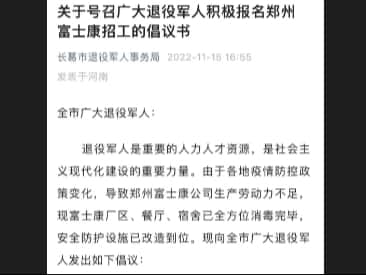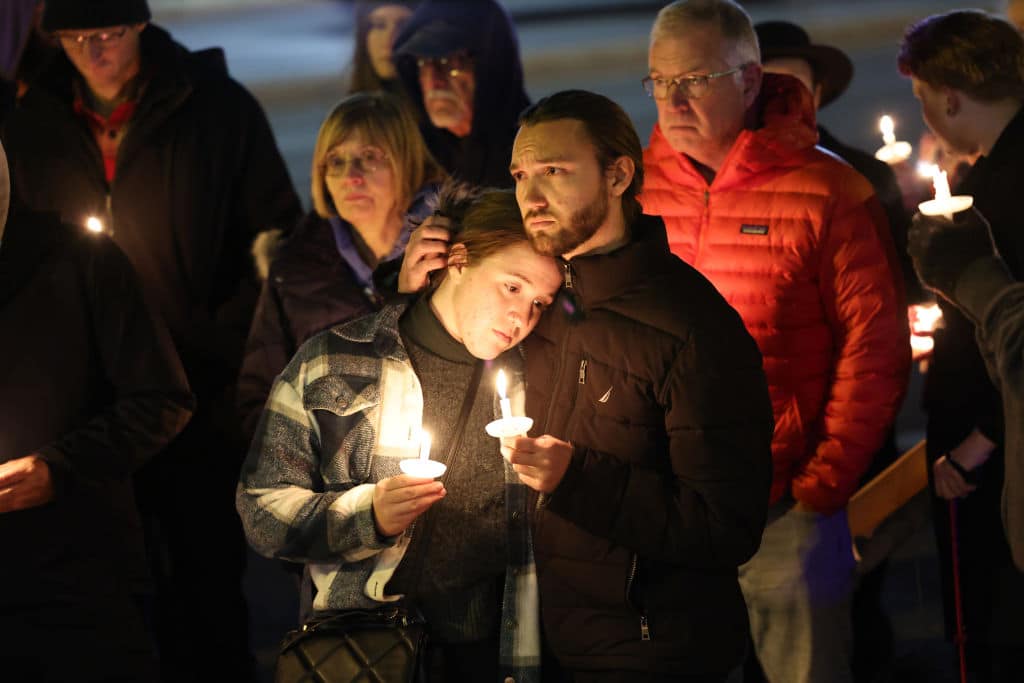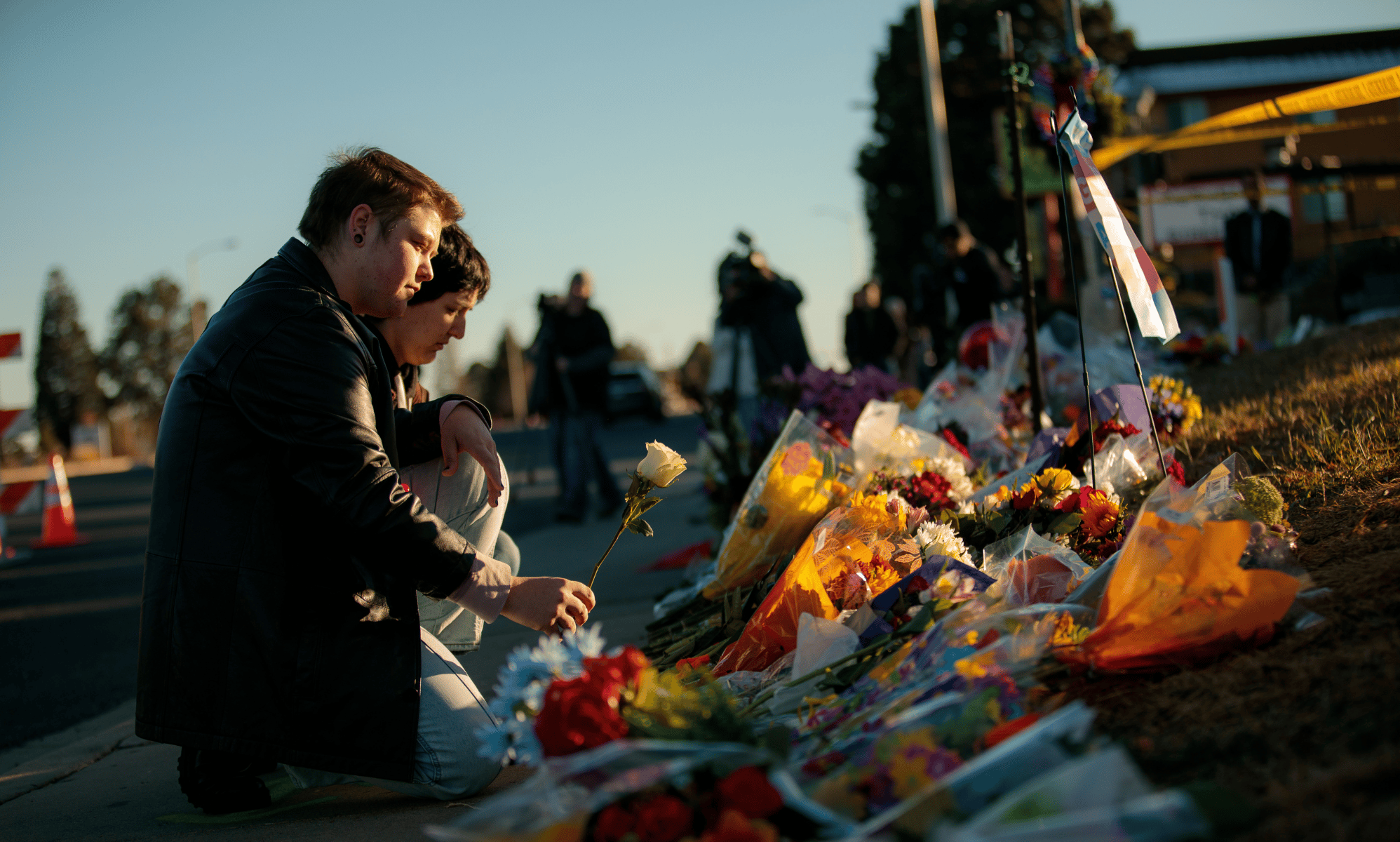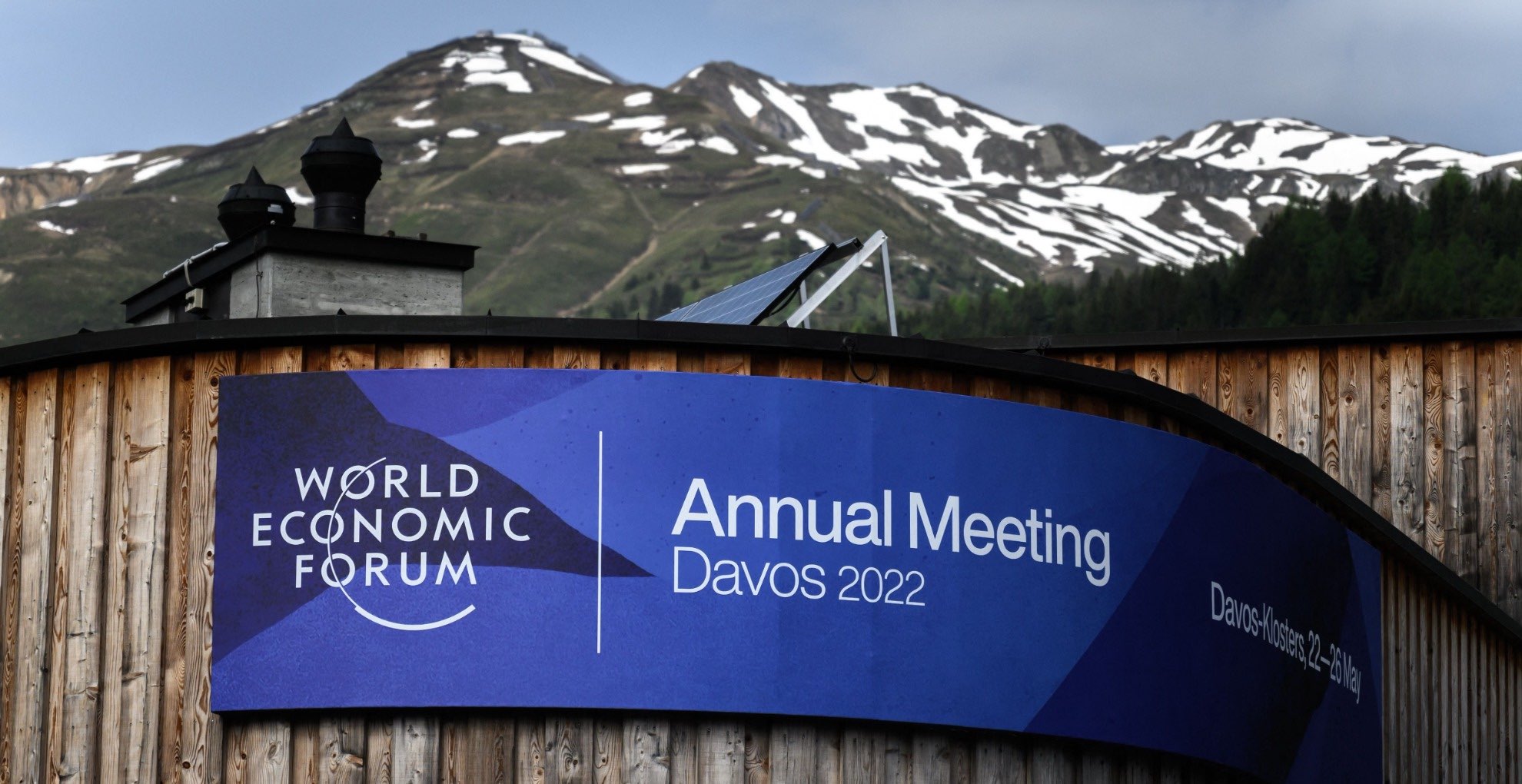Foxconn, Apple's principal subcontractor, saw a surge in Covid-19 cases at its Zhengzhou site in recent months, leading the company to shutter the vast complex in a bid to keep the virus in check.

Large-scale protests have broken out at Foxconn's vast iPhone factory in Zhengzhou, central China, images circulating on Weibo and Twitter showed.
In the videos on Wednesday, hundreds of workers can be seen marching on a road in daylight, with some being confronted by riot police and people in hazmat suits.
Others show hundreds of people in hazmat gear standing on a road near what appears to be factory residential buildings, while the person filming the clip from an adjacent apartment building says: "It's starting again, from last night to this morning."
Video from a separate livestream showed dozens of workers at night confronting a row of police officers and a police vehicle with flashing lights, shouting: "Defend our rights! Defend our rights!"
The Weibo hashtag "Foxconn Riots" appeared to be censored by Wednesday noon, while some text posts referencing large-scale protests at the Foxconn factory remained live.
Beijing's unrelenting zero-Covid policy has caused fatigue and resentment among wide swathes of the population, some of whom have been locked down for weeks at factories and universities, or unable to travel freely.
READ MORE: World's largest Apple iPhone plant under lockdown in China
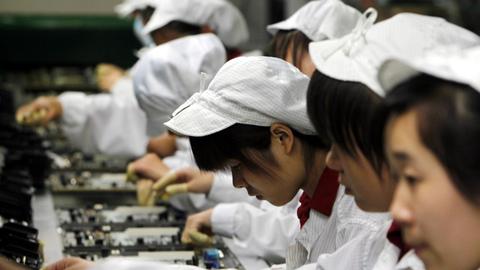
Foxconn admits overtime by student interns in China factory
'Closed loop' bubble
Foxconn, Apple's principal subcontractor, saw a surge in Covid-19 cases at its Zhengzhou site in recent months, leading the company to shutter the vast complex in a bid to keep the virus in check.
Since then, the huge facility of some 200,000 workers — dubbed "iPhone City" — has been operating in a "closed loop" bubble.
Foxconn, also known by its official name Hon Hai Precision Industry, is the world's biggest contract electronics manufacturer assembling gadgets for many international brands.
Foxconn is China's biggest private sector employer, with over a million people working across the country in about 30 factories and research institutes.
Zhengzhou is the Taiwanese company's crown jewel, churning out iPhones in quantities not seen anywhere else.
READ MORE: Pinduoduo: China’s Tech culture under scrutiny after suicides
Source: AFP
Violence erupts between workers and the police at Foxconn's plant in Zhengzhou

China's Zhengzhou district witnessed a violent clash between hundreds of Foxconn workers and the police on Wednesday. The district, which is also dubbed as "iPhone city" due to Foxconn's largest factory, has been under strict COVID curbs since mid-October.
The clash began after hundreds of workers started a protest overnight over unpaid wages and fear of an infectious outbreak at the plant. Many workers were seriously injured after their squabble with the police.
Foxconn's Zhengzhou plant is the company's largest factory in the world that employs more than 200,000 workers. However, due to China's zero-COVID policy, the whole district of Zhengzhou has been under strict lockdown.
The violence is part of the growing tension at the district due to the lockdown. Many workers have also fled the factory, and the district itself over frustrations about how the virus outbreak is being handled by China and insufficient food rations for the residents.
The policy has resulted in supply shortage of the iPhone 14 series before the holiday season. Both Apple and Foxconn are taking preemptive steps to reduce the short supply by boosting productions in Foxconn's Shanghai, China and Chennai, India plants.
Foxconn riots: what is happening at Zhengzhou factory, why are workers protesting at company’s iPhone plant?
Large-scale protests have broken out in Foxconn Technology’s plant in China that produces Apple’s iPhones
By Suswati Basu

Large-scale protests have broken out in Foxconn Technology’s plant in China that produces Apple’s iPhones (Twitter / NationalWorld)
Images circulating on social media show violent protests at Foxconn’s vast iPhone factory in Zhengzhou, central China, amid frustration over treatment of employees and how Covid-19 cases were being handled, including what they said were insufficient provisions of food.
The Zhengzhou plant is the world’s largest iPhone factory with some 200,000 workers. The unrest comes as the Taiwanese firm, Foxconn, recruited an additional 100,000 staff earlier this month, due to an exodus blamed on alleged poor treatment of workers. The hiring spree comes at a time when Apple is facing significant supply chain constraints at the assembly facility and expects iPhone 14 shipments to be hit just as the key holiday shopping season begins.
Foxconn executive Yang Han told Sina Finance: ‘’The quota is finally full, and the recruitment work is temporarily suspended", adding “we still have to do a good job in epidemic prevention in the park. This part is really challenging”.
At the same time, it was reported that Foxconn had changed the subsidies that workers would receive under the new recruitment drive in order to quell anger. The company said it had quadrupled daily bonuses for workers at the plant this month.
What is happening at the Zhengzhou factory?
Videos shared on Weibo and Twitter on Wednesday (23 November) showed hundreds of workers marching on a road. Some are seen being confronted by riot police and people in hazmat suits. Social media users livestreaming the protests said workers were beaten by police and people in white suits carrying riot shields.
NationalWorld cannot independently verify the media, however, there were claims that workers were not being paid fair wages and footage showed witnesses reporting that people were being beaten by authorities. The rare scenes of open dissent mark an escalation of unrest that has come to symbolise a dangerous build-up of discontent with China’s strict Covid-19 rules as well as clumsy handling of the situation by the world’s largest contract manufacturer
Some workers were seen chanting “give us our pay” as they were surrounded by people carrying batons, according to footage from one video, whilst another shows people attempting to damage official booths.
Why are workers protesting at the company’s iPhone plant?
Advertisement
There have been reports of contract disputes over pay as well as workers expressing concerns over sharing dormitories with those who tested positive for Covid-19 and inept distribution of food.
In a statement, the company described rumours that new recruits were being asked to share dormitories with workers who were Covid-positive were "patently untrue". Foxconn told Chinese media Yicai: "Before new colleagues move in, these dormitories are sanitised and approved by the government before new employees can be accommodated, and there is no mixing with the original employees."
There are estimates that thousands fled the factory campus late last month during a new Covid-19 outbreak. Some employees climbed over fences and walked home hundreds of kilometres on foot to escape the plant.
To retain staff and lure more workers the company has had to offer bonuses and higher salaries. The veteran affairs bureau in Changge, a county under the administration of the city of Xuchang in Henan, posted an open letter urging retired Chinese Army personnel to “answer the government’s call” and “take part in the resumption of production” at Foxconn’s manufacturing complex in Zhengzhou. The letter suggested that they “show up where there’s a need”.
Advertisement
Does Apple still use Foxconn?
Foxconn is Apple’s biggest iPhone maker, accounting for 70% of iPhone shipments globally. It makes most of the phones at the Zhengzhou plant, though it has other smaller production sites in India and in other parts of China. The Zhengzhou plant was responsible for about 60% of Henan province’s exports in 2019, Yicai Global reported. It is still used as a major supplier for Apple.
China’s stringent Covid-19 policies have been scrutinised heavily. Earlier in November, visitors to Shanghai Disneyland were filmed trapped inside the park after authorities announced a sudden lockdown, with people unable to leave without a negative test. More recently, the southern city of Guangzhou locked down its largest district in an effort to control another major outbreak.
Protests at largest iPhone factory in China:
Violence, insufficient food, and unpaid
bonuses
By José Adorno
November 23rd, 2022 
Hundreds of workers at Foxconn’s largest iPhone factory in Zhengzhou province, China, are protesting due to delayed bonus payment, insufficient food, and frustration with the country’s harsh COVID-19 rules. These protests come amid a severe lockdown early this month, with workers having to sleep in the factory while trying to produce the new iPhone 14 series – currently low in stock worldwide.
According to Reuters, online images show hundreds of Foxconn workers protesting with surveillance cameras and windows smashed by men with sticks. The publication says this protest “symbolizes a dangerous build-up in frustration with the country’s ultra-harsh COVID rules as well as inept handling of the situation by the world’s largest contract manufacturer.”
Footage of the protest shows that Foxconn workers are demanding the payment of their bonus to work during this month’s COVID-19 lockdown, tear gas being deployed, and workers taking down quarantine barriers.
In a statement, Foxconn said that it has paid workers and that information about infected staff living on campus alongside new recruits was “untrue.”
“Regarding any violence, the company will continue to communicate with employees and the government to prevent similar incidents from happening again,” the company added.
A person familiar with the matter said that even with the protests, the plant was “unaffected,” meaning that iPhone 14 production is still up.
Previously, Reuters reported Foxconn’s plans to resume the iPhone 14 total production by the second half of November. One of the publication’s sources said the manufacturer is unlikely to hit the target due to “disruptions triggered by the unrest” as it impacts “particularly new recruits who were hired to bridge the gap in the workforce.”
Early this month, Apple provided an unusual statement regarding the situation with its supply chain by saying people are willing to buy the iPhone 14 Pro models, but the company can’t keep up with demand.
We continue to see strong demand for iPhone 14 Pro and iPhone 14 Pro Max models. However, we now expect lower iPhone 14 Pro and iPhone 14 Pro Max shipments than we previously anticipated and customers will experience longer wait times to receive their new products.
BGR will keep reporting on Foxconn’s largest iPhone factory protest as we learn more about it.

